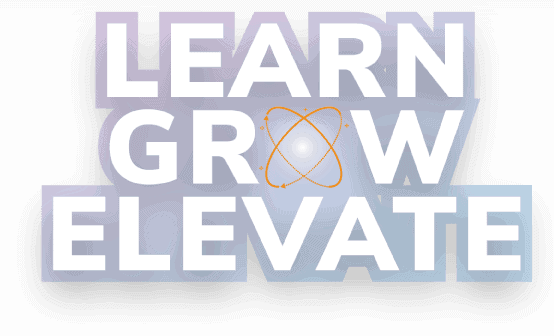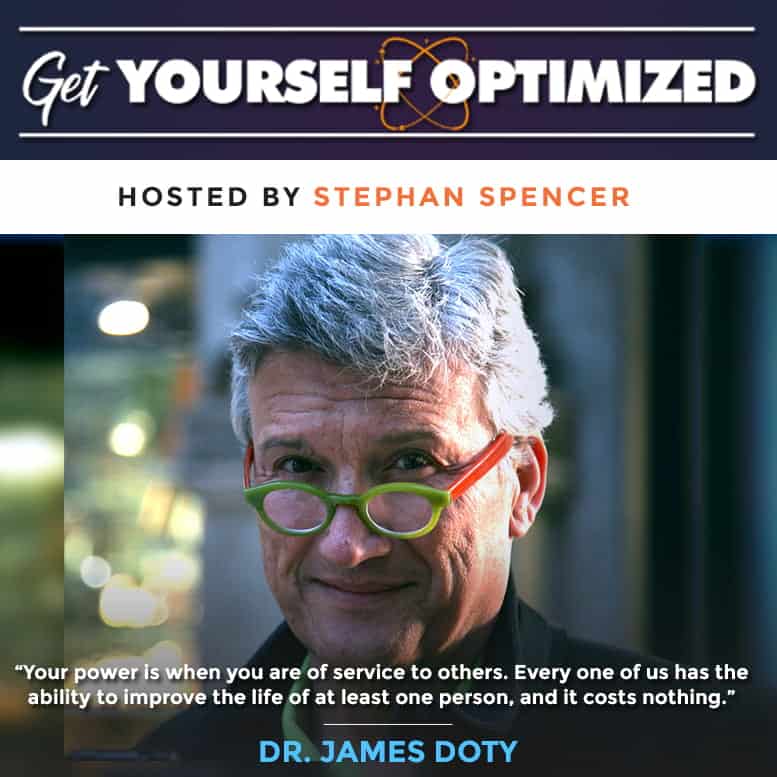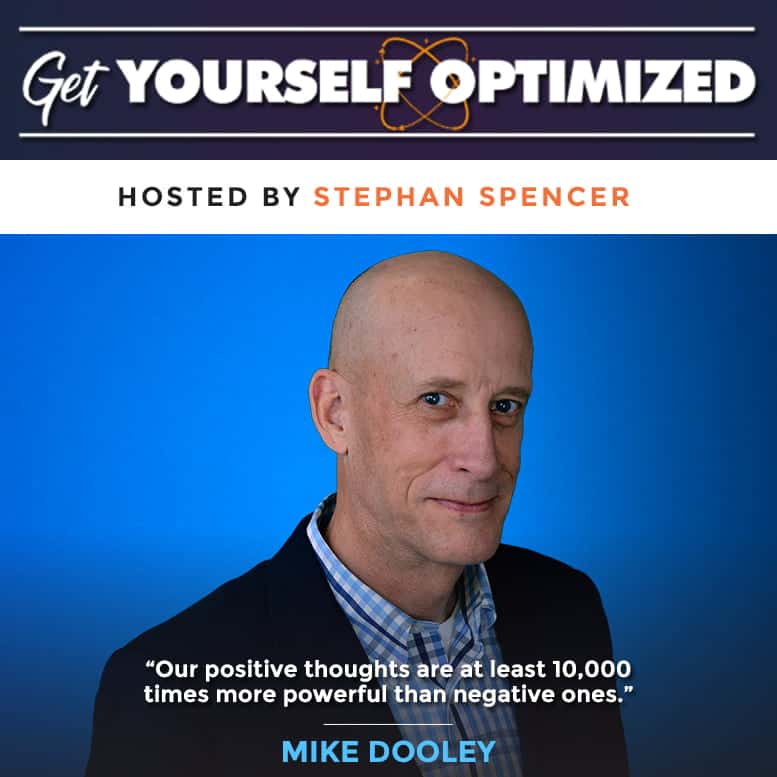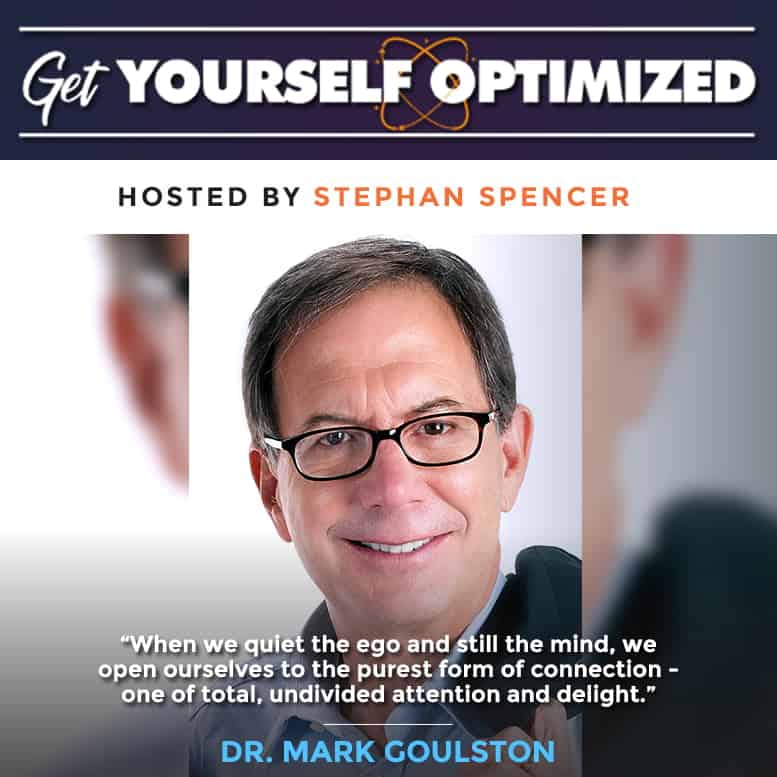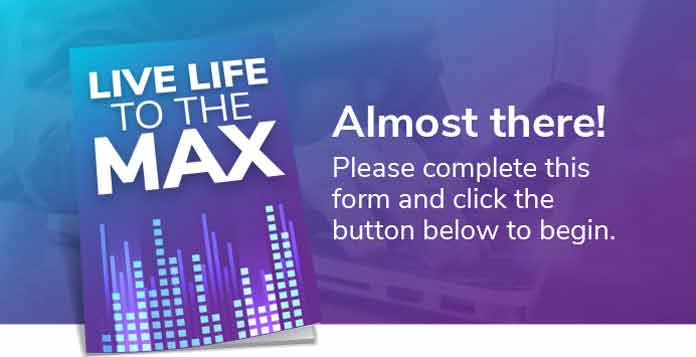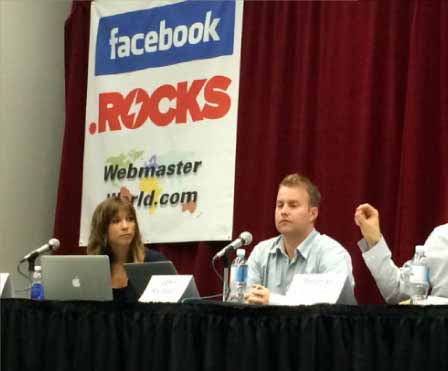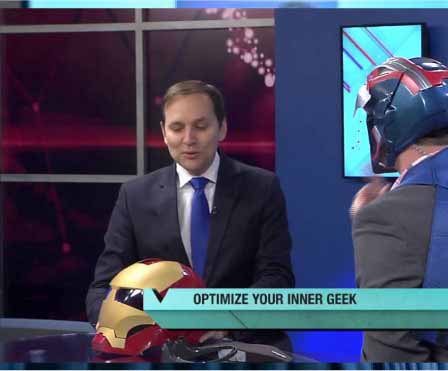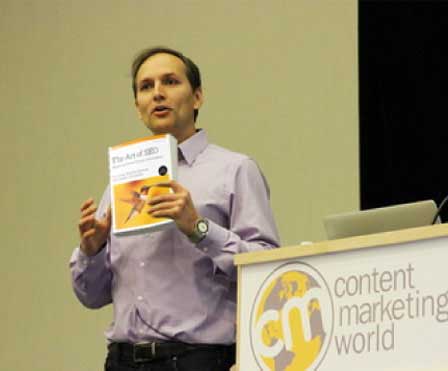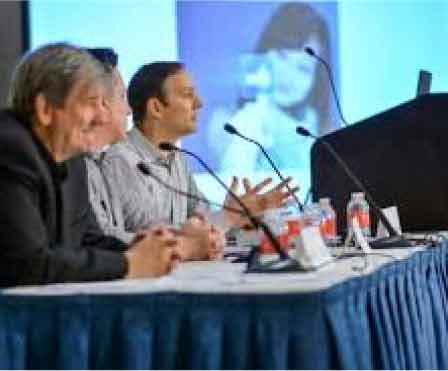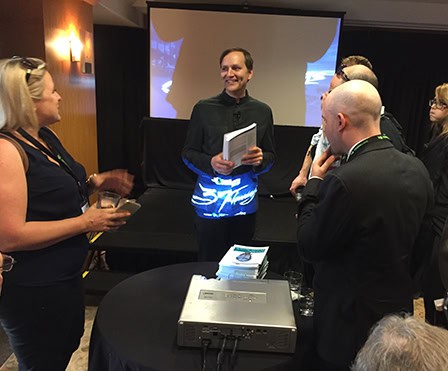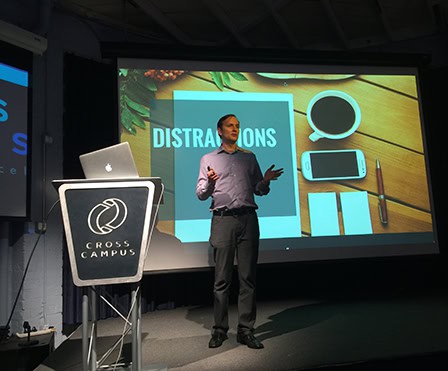Transcript
Mandi, it’s so great to have you on the show.
Thanks so much for having me here.
What is a hands-off CEO?
It’s a whole new movement of entrepreneurs that want to claim their freedom and profit from it at the same time. What it looks like is a different type of leadership where you are empowering other people to be resourceful and to own whole parts of the business for you. That is you can focus on what matters and you can leverage your time and make the biggest impact for your business for the number of hours you work so that you don’t have to work as many hours and make more money working less.
It’s not as easy as it sounds though. Team members don’t have the same drive or ambition or interest in your business succeeding as you, the owner of the business. That’s pretty much universal, I would think.
That’s a bit of a limiting belief.
Tell me more about that. If I feel I have to do a lot of things on my to-do list myself and there are things I feel like can’t delegate and that could be a limiting belief as well. Then how do I empower these team members to feel like they’re invested in the success of that task or that outcome?
Hiring the right people goes back to the foundation of what you stand for as a company. Click To TweetIt’s important to be hiring the right people that share your values. Hiring the right people is critically important. That goes back to the foundation of what you stand for as a company and how are you benefiting your staff. Having such a big vision that you attract the perfect types of employees who want to be part of what you’re building and who are so excited to come into work every day and to put in the extra effort. They love coming to work every single day. It’s pure pleasure for them. You have to have something special about your business to be able to attract those type of people, the higher performers who can work anywhere they want and to be able to help them become the very best that they possibly can. They understand that working at your company is part of their development and being their very best and living their lives to be the most fulfilled that they can.
Does that mean that you have to give them percentage ownership in the business? Can you set them up to feel that drive and ambition and need to grow your business even if they’re not an owner?
It’s going to be dependent on the culture of a company. Some of our clients bonus all of their team based on profit share. Everyone on their team gets bonused. You can have some people that are incentivized based on how well the business is going. I think that it makes good sense to do that. My team is definitely bonused on their contribution and it makes good sense. What we need to remember is that as CEOs, the way we think is not the way our team thinks. What is important to us is not necessarily important to our staff. When we make that mistake, then we start making these decisions that we think are going to make our employees happier, when it’s what we think that they’re going to make them happier. The things that make our employees happier are that they are giving back, that they’re part of something that’s important and that they’re appreciated. That is the cheapest way of motivating a person is by giving them good tangible appreciation for a job well done. They want to be acknowledged and recognized. That is one of the most underutilized tools for empowering your team.
What makes an appreciation tangible?
The biggest thing is a way of being a leader, where you are reinforcing what you want to see more of. It’s like parenting. You want to reinforce what you want to see more of and that doesn’t mean you’re not going to correct bad behaviors. This might even be from John Gottman who is a relationship specialist.
I love John Gottman. He’s great. I’ve been to one of his workshops. That was incredible.
This was something I learned back in college in a relationship class. You want to have eight touches. You want to have a ratio of eight positive to one negative in all of your relationships. As long as you have an overwhelming amount of positive touches in a relationship, then you can write out that one negative. That’s what I mean by tangible. I don’t know if you’d even consider that tangible or not, but that’s something that I have learned how to focus on. Here’s something else too. I’ve discovered that it’s easier to do it with some employees than others. If you find that it’s very difficult to do that for someone on your team, it’s an indication that maybe this person is not a good fit. This person’s not allowing you to show up as the best leader and maybe shouldn’t be in your organization. I’ve had to learn that one the hard way. When I brought on some people who were a delight to lead, it was so much easier. It was such a more positive environment where I didn’t feel frustrated because I didn’t feel like there was as much to praise.

They should be a joy to work with. If it’s hard work and you just tolerate them, it’s probably not a great fit.
What can happen is that employees can start off being a real delight and then it gets worse and worse. It’s not quite bad enough to let them go but meanwhile, you have this huge energy drain and you don’t even realize it. Maybe your business is growing and you don’t feel like you can deal with that problem right now because it’s not a big and painful enough problem to deal with. If people are finding themselves into this challenge, don’t give yourself too hard of a time on it because it happens to all of us. It doesn’t necessarily mean don’t do something about it, but don’t necessarily beat yourself up too bad about it.
How would you suggest building a culture that makes people want to work for you? Does that attraction strategy attracting potential employees who want to work for you instead of you having to keep doing all the heavy lifting yourself to try and drag people into your organization? Culture is not something that comes naturally. You have to create one. You have to be intentional about it.
One of the things is you as the CEO owning that you’re the creator of the culture. You might already have an existing culture here, but you taking ownership of that and not necessarily trying to create it by consensus. I’ve seen that but you saying, “I am the leader here. I’m directing this. I’m sailing this ship. What do we want this to stand for?” Some of the things that I would recommend is putting part of that if you want this hands-off CEO type of company that’s inspiring is to be attracting resourceful people who can figure it out. That allows you to put them into a position of responsibility and for them to be able to own it. If they can’t do that, then that’s something that I always looked for in the hiring process too is listening in for how resourceful they are. Put them through some tests that help us understand that.
The other big thing is to be doing work that’s worth doing and worth scaling. I work with service-based businesses mostly. Looking at their service and saying, “How can we make this even bigger?” A bigger idea around it or a bigger outcome. How do we make this more transformational for the type of clients that we work with? What works for me is when I’m doing a job, I do an advertisement. When I am trying to attract the right type of employee or contractor, I am writing a job ad. I’m writing up all the great things about our company and why they want to work for us. One of the biggest things is the work that we’re doing and we’re changing lives and we donate some of our profits to rescue children who are enslaved in sex trafficking.
The proceeds from our upcoming book go towards that as well. What I’m finding is that people want to be part of something that is making a big impact. You spend so much time in your life working and you want that to be making a difference. When you have employees that come to work and know that what they’re doing is helping someone like a grieving CEO being able to stay home with their wife while they are dealing with cancer for example. We’ve had so many different types of clients that have run into some certain life things that a spouse died and they were able to be at home with their teenagers while their company ran completely 100% without them. That was a marketing agency. Being able to sell the company and be able to retire when the company was worthless without them. Be able to get home at [4:00]PM and spend time with their family. People want to be part of changing the world. Look at how your business can change the world and how you can push those outcomes. Communicate that and have that be a core part of your culture.
I have a couple of questions about the things you’ve said. One was you said, “Put the candidates through some tests.” I would love to hear what your tests are that you put them through?
What we need to remember is that as CEOs, the way we think is not the way our team thinks. Click To TweetOne of the key roles that we hire for and we hire for our clients as well on this when they want to or we have a whole system for how they do it, how to hire operations managers or second-in-command. We have a unique process for taking a project manager and elevating them to an operations manager or an operations manager and training and developing them up into a COO. It depends on where the company is and it helps you be able to get that level of staff before you can afford it and develop them into that. They become a very strong part of your organization as you develop them into it. It’s a fabulous way, we found it. You have to be careful in the screening process to make sure that these people have these characteristics that you want. You want someone coachable and resourceful. You want to have the right attitude. 89% of hires fail because of issues with attitude, coachability and fit and only 11% of them failed due to lack of skills.
We’re looking for the right kind of attitude and you have to define that beforehand and you come up with custom questions for them. Some of the things that we use to test this, we have multiple hoops for them to jump through. One hoop for example, for looking at the skills of a project manager just tells me about thirteen to twenty different things. I put together a big project list. It was a mess. The workflow is this big point form. I say, “Take this list and put it into some organized type of thing. You can use whatever method or software you want to use, that’s fine.” What I’m looking for is do they have some methodology to it? Part of the test too is do they interact with this list and see if there are drop downs? There are hidden dropdowns there that are easy enough to find. For a detailed person, they would be able to hover over, click through it and find it all, but about 40% of them don’t. That tells me that they don’t have very much experience with online software. We immediately eliminate a lot of those.
I want to know if they used some type of software. If they used a spreadsheet, that’s fine as long as it makes sense. There was a number of different criteria that I’m looking for. I’m looking at how they take this information and organize it in a way with a limited amount of information. That takes skills like being resourceful. Some of the best people came back and asked a very specific question that helped them be able to do a better job on it. Every now and then someone would ask a dumb question and then that tells me a lot too. There are all these different things that we’re testing. Here’s the other one too. The other big part of this is doing a screen share recording yourself going through this or something like that. That tells me, “Do they have the ability to record a video? Can they attach it?” Believe it or not, this is a very difficult thing for people like recording a video and attaching it. It also tells me when they’re explaining it, how well can they explain themselves? Do they have good grammar? Do they follow the instructions the way we told them? You hear how there are twenty different things that we’re testing with this one exercise.
I do some things along this line. I have a riddle that the candidate has to solve and show their work in the inquiry. If they attach a CV or resume, cover letter and then they don’t solve the riddle or at least attempt to in the inquiry, they get put into the delete file. That’s one cool thing you can do. Another is to instruct them to put a certain word or phrase in the subject line or make the subject line be this. A lot of people don’t do that. Another is to tell them instead of sending a resume in, leave a voicemail at this phone number and answer these three questions. You get a lot of the same insight into whether they can think on their feet and be eloquent and articulate and all that.
Those are great tests. Every test that you do is going to be based on the role, based on your company and the culture and also how many job applications that you have. If you have someone doing a recording, for a higher-level position where you might have fewer applicants, that’s great. For a virtual assistant role where you might get 100, that’s pretty hard to sort through all of them.
That would be cool though if you’ve got 100 legit inquiries for a VA position.
It would, but what I would probably do is I’d have that maybe be as a second step so I can sort through them a lot faster. I’m looking at how do we knock out as many of the bad eggs, low performers at the beginning of the process so we have only a few people that we have to evaluate? You don’t have to spend as much time evaluating people that are already not going to be a good fit.

We do that. We don’t require people to leave a voicemail on the first stage of the process because that’s a lot of extra effort on our part. Putting the answer to the riddle with your work and showing your work is a lot easier to manage because that’s just quickly scanning the email to see if they included that or not. Did you say that you build this test in WorkFlowy?
I just happen to have it in WorkFlowy. It was from an earlier project plan I was putting together. I used that because it’s an online tool that I’m looking for if someone has the ability to do some problem solving and that if they have some online experience. That’s one of the things that test that.
Is that a tool that you like using for other things than just this one little test?
Yes, I do. I’ve used it for a number of different things. I go on and off of it. I use Evernote a lot too and Google Docs. It’s a tool that I use on and off for different things. Sometimes a lot of planning and visioning where I might not keep it somewhere else. My end of year review I tend to do in WorkFlowy.
Do you do a lot of mind mapping and what tool do you use for that?
I use pen and paper mostly for that. I am very visual. I’m an artist too and I used to be a designer. I have embraced paper. I always start doing it on paper. Tons of my process development start on paper. It helps you tap into the deeper creative flow.
I am onboard with that. I like using pen and paper as well, especially if I’m taking notes at an event or some conference or something. My note taking will be more effective and more thought through. I won’t be just parroting exact words and phrases that I picked up from the speaker. If I’m typing into the laptop though, that tends to happen. Let’s say that you have a job ad that includes that mission of yours to stop sex trafficking and you’ve set some initiatives up and so forth and you’ve alluded to that in the job ad. What else are you doing that makes people want to join your team. They’re like, “I’ve got to apply for this job. This is so much cooler than all the other jobs that are out on this job site or whatever.”
Culture is not something that comes naturally. You have to create one. Click To TweetOne of the biggest things is being clear about the autonomous work that they’re going to have and the work environment because top performers love not being micromanaged. They want to be able to have control over them making an impact, but also they’re doing a good job without having to be told what to do constantly. That’s one of the things. Also preparing your business for the right type of team. I started going into this a little bit with the big idea and having things be outcome-oriented. What the other side of this does is that it allows you to have a good strong lead generation process that you have consistent cashflow in your business and it’s consistently growing. Employees love going for a company and working for a company that’s on its way up because there are more opportunities for them. By having that to be a big part of that, you are hiring people that you want to grow with the company. You have to be able to create those opportunities in your company by continuing to grow. The best way that I know how to do that for services is to be looking at your current offer and looking at how you can make an even bigger impact with what you’re doing. Be able to charge more and increase the profits so that you have a very sustainable growing company. Employees want to work for a company like that because of the security.
Most people are risk-averse and certainty-driven. If we can de-risk new opportunity of switching roles or switching companies, that’s a good thing. Let’s dig into some of your Hands-Off CEO frameworks. I’d love to have our audience understand the difference between a regular CEO and a hands-off CEO. The kind that you have trained and nurtured to become somebody with that freedom to disappear for six months on Sabbatical and have the business take away just fine while they were away. Also some frameworks that go with that. What are some of the secret sauce that’s not too secret because I don’t want to put you on the spot?
I’m open about what I share because I can sit here and share all this information, but it doesn’t add any value until you implement it. There are so much more where this came from. I’m not worried about that. The biggest thing is around the mindset and around how they show up. Let’s talk about the underlining system around it. I was talking before about that service that is at the core doing work that’s impactful and that is a big ingredient to being able to have a service that can scale. What I see happen a lot is services that are based on an hourly rate or like it’s a time for money type of thing. Even if they’re not charging their clients by the hour, their clients see it that way. They have a time for money model.
The reason why is because they’re not adding enough value to their service. In order to scale a company and to be able to fund it being hands-off, you have to have enough profit in it to do that. Otherwise, you’re going to be tied to the delivery of it. A regular CEO in a service-based company is very tied to the service delivery because there is not enough profit to scale him out of it or her out of it. One of the first things is it’s a sustainably profitable company that can fund the CEO to be working on high-level growth. Working on the business instead of in the business. There are two things right here. It’s a highly profitable company for one and two is working on the business instead of in the business. The classic E-Myth type. I think everybody has heard that.
I would hope so. To our audience, if you are not familiar with that concept or with the E-Myth, which is a fantastic book. I do have an episode on this podcast with Michael Gerber who is the author of the E-Myth and it’s fantastic. It’s a must-read episode.
The E-Myth is a great book, but one thing is that it’s very focused on scaling more of a commodity type of service. There are tons of nuggets that you can get out of that. The premise behind a lot of it is strategy is the hardest thing to scale. In order to scale this, we need to remove the strategy. What that does is it makes it more commoditized. Now, you’ve started a new business because now you have more of a volume-based business instead of this high touch business where the results you’re getting come from the strategy. One of the things that we focus on that allows you to have a hands-off business is looking at the framework for what we call is our service management blueprint, but looking for this framework for how do we scale strategy. How do we be able to do that in a way where we could pass off at least 80% to the team? 80% is the first level of being a hands-off CEO on up to being able to delegate 100% of it. It depends on what your goals are. A lot of our clients love doing the strategy work and they are the ones doing it. If you want to be able to prepare to sell your business someday, you have to have some framework for how you’re going to scale that strategy.
I want to share a story of how I was able to scale the strategy on it. I’d love to get your feedback on this and hear your reaction to it. This was my previous company, Netconcepts, which I did successfully sell back in 2010. What made that business so salable and worthy of being acquired was a technology platform I had developed called GravityStream. It was an SEO consultancy or agency that essentially a time for money arrangement as most consultancies and agencies are, but with a retainer model and so forth. It was very profitable for that side of the business. GravityStream was the way that I scaled the strategy because I wouldn’t personally be able to get involved in every single client and what they were up to with their SEO. I would have to rely on my team, on senior consultants that worked for me and analysts and the account managers and so forth.

Once I incorporated into the model Software as a Service, that allowed us to charge on a cost-per-click basis for SEO and we injected into this platform, all these rules and IP strategies that would create value for the client without us having to do a lot of handholding. We would do the work for them without them having to get involved in applying fixes to the website infrastructure or the content management system. We did it for them but at a middleware layer using a reverse proxy. It allowed us on the fly to fix all these SEO issues and charge on a cost-per-click basis, just like Google Ads but it was for SEO, for organic Google traffic. It was like a printing machine for money. It was incredible. We had clients like Zappos who are paying us seven figures a year for use of the platform and that was all paid per performance. It was a cool model but I no longer own that because that got sold with the agency. What do you think?
What I’m hearing is that you innovated your model to move away from dollars for hours to the SaaS model that is scalable. Not only did you moved away from the monthly fee, but it was on performance for the cost-per-click. I think that’s cool. You added another element of the scalability. What I’m talking about with this Service Management Blueprint, it’s a side from that because you had that great thing that you could build and everything, but how do you do that within the context of delivering the strategy in the service?
Let’s say that you have an agency that you can’t come up with some Software as a Service solution. You’re going to add some systems and scalability to the service offerings that you’re already doing.
That’s a big part of it, but it’s not just about the systems and processes. We work with a lot of companies and a lot of agencies that have the systems and processes in place, but they’re still stuck in this time for money model. It’s not just about that. The other part of that is that it’s the time for money model that’s heavily reliant on highly skilled labor. That’s one of the problems if you’re scaling an agency, specifically with an agency, because you have to hire a lot of brains rather than hands people. You have to hire a lot of brains to do the strategy work. There’s very little cut leftover because after you have hired all those people to replace yourself, you have to pay close to what you would be paying yourself for it and there’s a lot less money left over. What we like to do is look at the overarching framework for how all of these systems fit together. I don’t even like to talk about systems very much because a lot of people glaze over. It’s not about just the systems. That’s one of the core pieces of it.
Looking at reverse engineering from understanding what the biggest outcomes that you could potentially provide for a client and then fine-tuning and focusing your system around that. Then you can have it be 80% based on a process and that process is where you get the hands people to do it. Most companies don’t have those broken down by those different roles unfortunately. They end up overpaying for their talent. Then 20% can be focused on the brains people where you’re customizing and putting together a framework for how you get these types of outcomes. I don’t know if that makes any sense to you there, but that’s our approach to it for scaling custom services.
Probably everybody is overpaying for the brains people and having too many man-hours or person-hours dedicated to the brains people that don’t need to be associated with them. If we then pushed a lot of that off to 80% of the team, it is a lot less expensive. With the help of systems, processes, training and so forth, they can achieve the same level of stuff. Is that a good recap?
Yes, it’s a good recap. The most important part though is that the brain people have limited capacity. It’s a cost part of it, but it’s an opportunity cost as well because they are limited like yourself as the CEO. You need to optimize their hours to be able to get the maximum value for the business for their hours. Them doing VA type of work as part of everything else, it’s a poor use of their time. It eats up bandwidth for the business that you can’t grow.
You don't have to spend as much time evaluating people that are already not going to be a good fit. Click To TweetLet’s use me as a guinea pig here. I have a team. I’ve got virtual assistants in the US and the Philippines and I have content writers. I have link builders, outreach people, SEO consultants, project manager and operations people. That’s my company, and let’s say not ideally skewed on that 80/20 scenario that you’ve got, how would you come in and fix me up?
First of all, I want to understand what the biggest breakdowns are right now. We want to understand what the biggest challenge is, fix that one thing and then it will fix a whole lot of other things without having to individually fix each one of those. What I’d say is what is the biggest thing holding you back from growing?
Me, I’m prolific with ideas. I have 5,000 items in my to-do list. I use Things and it’s all GTD-based or getting things done-based. It’s a cool trusted system that I’ve set up. There are many incredible seven and eight-figure ideas locked up and buried in the milieu of 5,000 other things. That’s holding me back and also, I’m too involved in my email. Even though I have multiple people managing my email for me and putting stuff in my action folder if it needs to be actioned by me and handling some of the stuff themselves that they can handle. This is my main email account. This isn’t like an office catchall email address. This is my personal main email for me and my business. I spend too much time on email even with that and I spend not enough time in the overall strategy for growing my business. I’m spending all that brainpower and time on my clients, big and small. Volvo would be an example of a big one. I won’t give the name of the smaller ones, but I’ve got plenty in my client list on my website that would be examples of the smaller businesses too. That gives you a sense of my predicament. I’m looking to bring on more people to help me with this problem. I’m actively recruiting now my team.
Who are you recruiting right now? What roles?
An executive assistant, which is different from a virtual assistant. I’m looking for probably not a person but more of a company. I’m probably going to hire this company that I just spoke to. They’re not an embedded staff person, but they come in and fix the leakage points in the business or at least identify them and work with my team to fix those leakage points, whether they’re in the lead nurturing stages or in client onboarding or retention or getting referrals or any stage in the funnels and so forth. They’ll identify those gaps and provide strategies to address them and then oversee the implementation of that or even do it themselves if we want to have them do it.
In your situation here, the first thing is to free up your time. List some of the things that you can do to free up your time. A company like that would be a good short-term solution to help you initially understand what’s broken and be able to fix those in the right order. You’ve got to make sure to fix them in the right order. You don’t just have this laundry list of twenty things to fix. We can all create a laundry list of twenty things to fix, but the most important thing is to understand what’s this one thing that is going to free me up ten hours this week? I find those things for clients all the time. We have a process we call Find Time Now and we find one, two or three tweaks to free up at least ten extra hours per week. What you’re looking for is key leverage points here. This is why when you listed off all of your team, “How do I get this to the 80/20?” You don’t do that. That’s not the first step. You want to do that but the first step is to free up the CEO then prioritize.
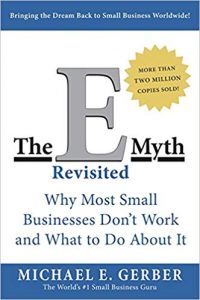
Your number one priority is actually spending time working on the business. Money tends to fix a whole lot of problems. That’s what’s going to fund your being able to hire this company, for example or hire experts that can point out and say, “These are some of the things that will make the biggest difference for you and be able to catapult forward your success,” because you stopped doing the things that necessarily got you where you are now that will continue that path. You start taking a new set of actions that you didn’t know to take because you weren’t at that level yet. You start taking those new actions and you’ll be at a whole new level. The whole focus key foundation here is that you have to have the cash coming in and I’m sure you do. This is more just for your audience that it’s critically important to understand what drives the biggest value in your service so that you can be able to attract the very best clients that will be able to pay twice as much, four times as much, ten times as much. This is something that we consistently look at with our clients. How do we get you for this initial package, you go from $1,500 to $3,000 to $10,000?
That’s a real case study for one of our clients for this initial pilot that she was offering. We got from $3,000 to $10,000 in a few months of us working together. The $10,000 took more than a few months, but we got it up to $5,000 soon. It’s looking at how you add more value so you can immediately pop up those investments and be able to near guarantee the outcomes for your clients so that you lower the risk working with you. It’s so much easier to bring on clients and your team is focused on delivering those outcomes. It creates this foundation and going back to this time. You buy time by going out and selling and bringing in more business, but you have to make sure you’re bringing in the right business and that you’re not just selling into maybe even your current network. Your current network might not be the ideal clients where you can be charging twice as much as what you’re doing right now.
It’s a pain point that I’m sure a lot of us have. I’m sure the audience can relate in not having enough time and feeling like there are too many things that are on your plate and you’re the bottleneck. I’m the biggest bottleneck in my business.
When it comes to you, you’re in a different place. This is typically where we work with clients as they’re at a place where you could quantify your time. An extra ten hours per week, 40 hours per month, that’s easily worth probably six figures to your business or multi-six figures. For some of our clients, it’s worth seven figures. I would encourage the audience to be thinking about what is their time worth? What could be focusing their time on in ten hours per week? Let’s say half of it was on lead gen and half of it was on building that capacity in the business because that will create capacity issues if you’re successful at growing the company. What is that worth to the company? When we break that down with our clients, their eyes get big and they realize the cost of them squirreling away time in the morning and email or being distracted by their team or not doing that uncomfortable thing. Making that phone call that they know they shouldn’t be making, that it’s costing them hundreds of thousands of dollars in their business. When you do that and you get that awareness, you tend to make different choices.
I’m working on adding that visibility. I was surprised when we did the analysis on the conferences and events that I had spoken at and attended to see which ones generated how much revenue and profit in relation to my traveling to that event. Some of the events that we’re at the top of the list were counter-intuitive, including ones that I haven’t even spoken at. There were events where I have spoken at the same conference five years in a row and generated almost no business. I thought it was a no-brainer to keep going. It’s a big industry show I should keep going and it’s not profitable. It’s not even revenue-generating, let alone profitable.
That’s smart what you did there. Applying the 80/20 rule and understanding what does the 20% delivering 80% of our results, our revenue here and then eliminating everything else. That’s one of the ways that you free up your time is by getting ruthless about rooting out the things that are not delivering results for you, for your time and your energy.
Let’s talk about this process you mentioned, it’s called Find Time Now! I want to know a little bit more about where do you get these ten hours because every CEO is different and every business is different. Yet, you found the commonalities that help illuminate where those wasted hours are. You fritter away time on email in the morning and stuff that’s universal I would guess. Although I’ve tried hard to change that behavior pattern myself. I do my morning ritual first before I check the email. It doesn’t always happen, but that is my intention and I do that a lot more than I used to. Then there are things like that’s a very unique industry-specific or company specific scenario and that’s probably costing you ten hours a week just there.
What I look for with this Find Time Now! process is where there are energy leaks and there are time leaks. Oftentimes the energy leaks are where some of the biggest things that are holding the company back. We look at those and see what can we do to eliminate, to automate, consolidate or delegate it.
As a CEO, one of the most important things to do is to guard your focus. Click To TweetEnergy leak, that’s different from a time leak because it takes their attention away or it’s painful or unpleasant for them.
The thing is that we can’t manage time. We don’t manage time. We manage our energy. We have a limited supply of energy. Some of us have more than others.
That might be a limiting belief that we only have a finite amount of energy.
You can create energy, but the reality is that we do have limited bandwidth and we have a limited amount of focus. That right there is not a limiting belief. As a CEO, one of the most important things to do is be guarding your focus. What a lot of CEOs do is they have learned how to become hyper-productive and learn how to use systems. Getting Things Done might be a good example of that where they’re productive and they learn how to get an enormous amount of things done in the same amount of time and essentially to become a great taskmaster. That is something that your team should be doing. There’s this mindset around like, “What is my job as the CEO? Where is my time best spent? Is it spent doing all these tasks even if I can do it a lot faster than other people? Is it spent on generating new ideas, new businesses and new innovative ways that we can be delivering our service? Ways that we can be making partnerships with others that are going to give us quantum leaps ahead?” Just be thinking about where your biggest time is.
Coming back to this though, probably the biggest thing that would be helpful for your audience is what are some key things that they can do to free up that time and to be able to increase their focus? Probably the best thing to do is to give some case studies of how this has worked. The biggest thing is in your power-hour and this is useful for everyone. There’s this golden time in the day where you can be able to get twice as much, three times as much, four times as much, this one client eight times as much in one hour if you’re hyper-focused, if you remove all distractions and you know exactly what you’re working on and you just do it. That’s the time of the day where you should be focusing on those growth tasks when they’re working on the business part. I’m not talking about reviewing proposals.
I’m talking about the big stuff, the volume. What is going to move the needle in your business? I love that you have that ritual. That’s great in the morning to get yourself empowered. After that ritual, what I would recommend for the audience is to block out this power-hour at least an hour. Some of our clients do up to three hours or more, but focusing on what I can do in this block of time completely uninterrupted. What they find is they can get twice as much done. If you can get twice as much done in one hour, that right there is an extra five hours per week just from one power-hour and it feels good to do. It does take some discipline, but that first hour of the day before you check email, before you do anything else, you have that guarded that you’re working on your most important work or that book, The ONE Thing, also references that as well. Before you can be distracted and before anyone else’s priorities come and creep in on you.
That’s the thing about email, it’s everybody else’s priorities but yours.
The other part of this is to be guarded about when your team has access to you. It seems like, “I want to be available to my team,” but it can be a huge suck of your energy to be drawn into the challenges or feedback right away for your day and you lose track. I’ll give you an example of one of our clients, Casey. She has implemented the power-hour in her business and what she’s found is that it shifted her entire day and how she runs her company. When we first started working together, she was probably like 80 hours a week, had two companies and it was overwhelming for her. Now she has two companies that run completely without her and she jumps into the parts where she wants to help innovate and help grow the company. That’s on her terms and she manages her teams from home and finds that it’s even more effective to do it that way. One of the core things that have helped her do that is to be focusing as a leader with this power-hour the first thing in the day.
If I wanted to have that business as Casey has, I would get a lot of pushback from my clients and prospects because they work with me at a premium price. They’re working with the guy who wrote the book or co-wrote it on the topic of SEO and they want to get the result and they want to work with the best. If I’m no longer integral to the business and I’m not providing my expertise and thought leadership to that particular account, I don’t know that my clients would be happy about that.
Your goal might not be to go completely hands-off in the business. Here’s the thing is that she’s run into that very thing where she had very high-level experts that she had to pay for, they teach lessons and they revamped their whole core curriculum around an outcome. She’s found that she’s gotten better work out of general entry level people that have no experience in the area that they trained up using the curriculum versus people who had a Master’s degree. That’s something that has been interesting. I was shocked finding that out myself. I knew that it would improve results, but I didn’t realize it would improve them that much. You don’t have to be completely hands-off.
The first step is to get you to 80% where you can focus on the 20% of the strategic. A high-level expert, I don’t think you’re necessarily referencing this during the power-hour, but there’s going to be an understanding of when your time is the most valuable on client projects and when your team’s time is the most valuable on those project. At what key points you need to be interjected into it to provide the maximum outcome for the clients. That’s what it means to be hands-off. I’m glad you checked in on that because that’s what is the ideal situation for her right now and later on she might want to be more hands-on in the business. It’s whatever works for your lifestyle right now.
Maybe we should share how they could get the Power-Hour Planner and maybe you could mention the Hands-Off CEO retreat that you’re doing.
I shared one small thing, how to use the power-hour to find an extra five or more hours per week. I have put together a nice planner to help you organize what you’re going to be working on during that time. It is a weekly planner and a daily planner and that’s what allows you to stay focused and be able to accomplish a lot more in less time. If you go to HandsOffCEO.com/PowerHour, you can download that. If you want more strategies, you can go to my website.
What about the retreat?
I’ve got a retreat coming up in May, the Hands-Off CEO Retreat. These things that we’re talking about and stepping into being a hands-off CEO, you’re asking about the difference between a regular CEO and the hands-off CEO. There are all these mindsets that go along with it. There are also some systems in the business of what that looks like. Then there’s also how do you develop your team to be able to step in and step up? That’s what this retreat is about is how do you empower your team to be able to run the business without you? That’s what we do. It’s in Los Angeles. It’s in a beautiful location. Everyone there is a multi-six or seven-figure CEO.
What’s are the dates for that?
May 3rd through 5th.
I happen to be in LA, I should check those dates.
You should, that would be an easy way. We chose LA because it’s so easy to fly into. It’s over Friday, Saturday, Sunday. No one has any excuse that they can’t leave their company for that long.
Thank you so much for all this great wisdom and for sharing some of your top secrets and tips and the power planner that you shared as well. That’s all fantastic stuff. If somebody wanted to work with you directly, work with your company to get coached or transformed into a hands-off CEO type of business, how would they get in touch with you?
If you download one of those resources, you can click reply and then that will go to my email and I’d be happy to have a conversation with you about it. If you have any questions about anything I’ve shared, you can reach out and I’d be more than happy to give you my perspective on the opportunities you have in your company.
Thank you very much and thank you to our audience. Take some action and get some of that stuff that doesn’t need to be on your plate. We’ll catch you in the next episode.
Important Links:
- LinkedIn – Mandi Ellefson
- Twitter – Mandi Ellefson
- The Hands-Off CEO
- HandsOffCEO.com/PowerHour
- E-Myth
- The ONE Thing
- Michael Gerber – previous episode
- WorkFlowy
- Things
- Find Time Now!
- Getting Things Done
Checklist of Actionable Takeaways










 About Mandi Ellefson
About Mandi Ellefson
Mandi Ellefson is the founder of Hands-Off CEO and host of the Hands-Off CEO Podcast. She works with agency and service business owners to immediately free up to 20-50% of their work week to focus on accelerating profits. Mandi helps her clients build and empower leaders to run whole parts of the business without them.
Her clients have added 5 figures of net profits every month, added millions of dollars in sales, and have exited the day-to-day so they can scale growth or even sell the business.
LOVED THIS EPISODE
Please consider leaving me a review with Apple, Google or Spotify! It'll help folks discover this show and hopefully we can change more lives!
Rate and Review